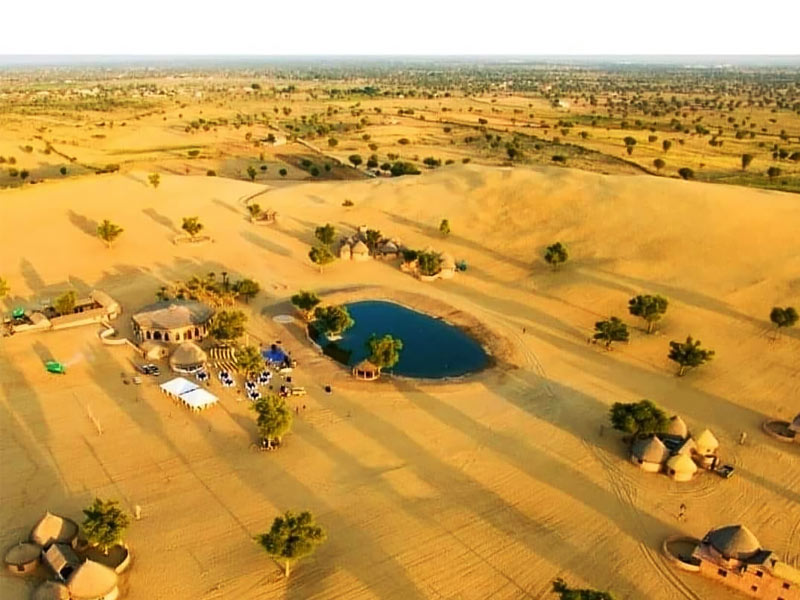The consequences of climate change might drastically alter India’s Thar Desert, which is renowned for its dry breadth.
The Thar Desert may resist this tendency and grow green within the next century, the experts claimed, although many deserts across the world are forecast to expand with rising temperatures.
Over 200,000 square kilometers of land make up the Thar Desert, which is located in parts of Pakistan’s Punjab and Sindh provinces and partly in Rajasthan. It is the ninth-largest hot subtropical desert in the world and the twentieth-largest desert overall.

Numerous studies have indicated that as a result of global warming, the amount of desert on Earth will rise. For instance, according to scientists, the Sahara Desert might grow by more than 6,000 square kilometers every year by the year 2050.
the consequences of climate change might drastically alter India’s Thar Desert, which is renowned for its dry breadth.
The Thar Desert may resist this tendency and grow green within the next century, the experts claimed, although many deserts across the world are forecast to expand with rising temperatures.
Over 200,000 square kilometers of land make up the Thar Desert, which is located in parts of Pakistan’s Punjab and Sindh provinces and partly in Rajasthan. It is the ninth-largest hot subtropical desert in the world and the twentieth-largest desert overall.
global warming will cause Earth’s deserts to expand. For instance, geologists predict that by 2050, the Sahara Desert may expand by more than 6,000 square kilometers every year.
Using a combination of data and climate model simulations, the study team found that the mean rainfall in the semi-arid northwest regions of India and Pakistan rose by 10 to 50% between 1901 and 2015.
According to them, this rainfall is expected to increase by 50–200 percent under moderate greenhouse gas scenarios.
reversing this tendency and causing the current Indian monsoon to move further west might drastically alter India’s west and northwest areas by bringing about a humid “monsoonal” environment.
Also read: The Vishwakarma Yojana program to Provide loan worth 1 lakh to workers with traditional skills
This shift may improve food security for the growing population of the country.
Understanding the dynamics of the Indian summer monsoon is essential to understanding how the climate may green the Thar Desert, said the study’s lead author, B. N. Goswami of the Department of Physics at Cotton University in Guwahati.
The researchers noted that while this unexpected turn of events poses questions, it also provides opportunities. The delicate balance of its ecology and the wider ramifications for the environment and nearby inhabitants are still being studied as the Thar Desert could change into a greener region.

























